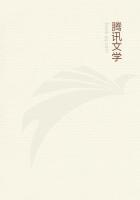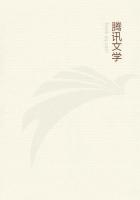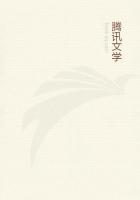Some hairs are congenital, others grow after the maturity of the animal; but this occurs in man only. The congenital hairs are on the head, the eyelids, and the eyebrows; of the later growths the hairs on the pubes are the first to come, then those under the armpits, and, thirdly, those on the chin; for, singularly enough, the regions where congenital growths and the subsequent growths are found are equal in number. The hair on the head grows scanty and sheds out to a greater extent and sooner than all the rest. But this remark applies only to hair in front; for no man ever gets bald at the back of his head. Smoothness on the top of the head is termed 'baldness', but smoothness on the eyebrows is denoted by a special term which means 'forehead-baldness'; and neither of these conditions of baldness supervenes in a man until he shall have come under the influence of sexual passion. For no boy ever gets bald, no woman, and no castrated man. In fact, if a man be castrated before reaching puberty, the later growths of hair never come at all; and, if the operation take place subsequently, the aftergrowths, and these only, shed off;or, rather, two of the growths shed off, but not that on the pubes.
Women do not grow hairs on the chin; except that a scanty beard grows on some women after the monthly courses have stopped; and similar phenomenon is observed at times in priestesses in Caria, but these cases are looked upon as portentous with regard to coming events. The other after-growths are found in women, but more scanty and sparse. Men and women are at times born constitutionally and congenitally incapable of the after-growths; and individuals that are destitute even of the growth upon the pubes are constitutionally impotent.
Hair as a rule grows more or less in length as the wearer grows in age; chiefly the hair on the head, then that in the beard, and fine hair grows longest of all. With some people as they grow old the eyebrows grow thicker, to such an extent that they have to be cut off;and this growth is owing to the fact that the eyebrows are situated at a conjuncture of bones, and these bones, as age comes on, draw apart and exude a gradual increase of moisture or rheum. The eyelashes do not grow in size, but they shed when the wearer comes first under the influence of sexual feelings, and shed all the quicker as this influence is the more powerful; and these are the last hairs to grow grey.
Hairs if plucked out before maturity grow again; but they do not grow again if plucked out afterwards. Every hair is supplied with a mucous moisture at its root, and immediately after being plucked out it can lift light articles if it touch them with this mucus.
Animals that admit of diversity of colour in the hair admit of a similar diversity to start with in the skin and in the cuticle of the tongue.
In some cases among men the upper lip and the chin is thickly covered with hair, and in other cases these parts are smooth and the cheeks are hairy; and, by the way, smooth-chinned men are less inclined than bearded men to baldness.
The hair is inclined to grow in certain diseases, especially in consumption, and in old age, and after death; and under these circumstances the hair hardens concomitantly with its growth, and the same duplicate phenomenon is observable in respect of the nails.
In the case of men of strong sexual passions the congenital hairs shed the sooner, while the hairs of the after-growths are the quicker to come. When men are afflicted with varicose veins they are less inclined to take on baldness; and if they be bald when they become thus afflicted, they have a tendency to get their hair again.
If a hair be cut, it does not grow at the point of section; but it gets longer by growing upward from below. In fishes the scales grow harder and thicker with age, and when the amimal gets emaciated or is growing old the scales grow harder. In quadrupeds as they grow old the hair in some and the wool in others gets deeper but scantier in amount: and the hooves or claws get larger in size; and the same is the case with the beaks of birds. The claws also increase in size, as do also the nails.
12
With regard to winged animals, such as birds, no creature is liable to change of colour by reason of age, excepting the crane.
The wings of this bird are ash-coloured at first, but as it grows old the wings get black. Again, owing to special climatic influences, as when unusual frost prevails, a change is sometimes observed to take place in birds whose plumage is of one uniform colour; thus, birds that have dusky or downright black plumage turn white or grey, as the raven, the sparrow, and the swallow; but no case has ever yet been known of a change of colour from white to black.
(Further, most birds change the colour of their plumage at different seasons of the year, so much so that a man ignorant of their habits might be mistaken as to their identity.) Some animals change the colour of their hair with a change in their drinking-water, for in some countries the same species of animal is found white in one district and black in another. And in regard to the commerce of the ***es, water in many places is of such peculiar quality that rams, if they have intercourse with the female after drinking it, beget black lambs, as is the case with the water of the Psychrus (so-called from its coldness), a river in the district of Assyritis in the Chalcidic Peninsula, on the coast of Thrace; and in Antandria there are two rivers of which one makes the lambs white and the other black. The river Scamander also has the reputation of ****** lambs yellow, and that is the reason, they say, why Homer designates it the 'Yellow River.' Animals as a general rule have no hair on their internal surfaces, and, in regard to their extremities, they have hair on the upper, but not on the lower side.
The hare, or dasypod, is the only animal known to have hair inside its mouth and underneath its feet. Further, the so-called mousewhale instead of teeth has hairs in its mouth resembling pigs' bristles.















